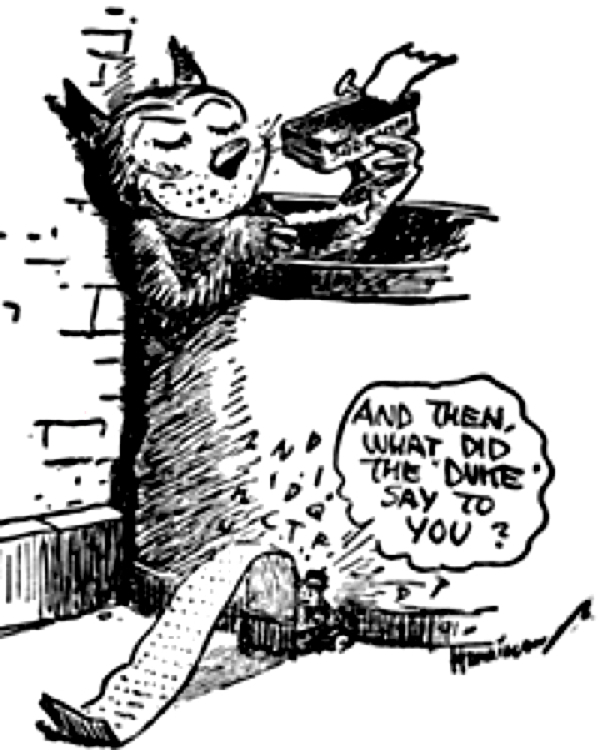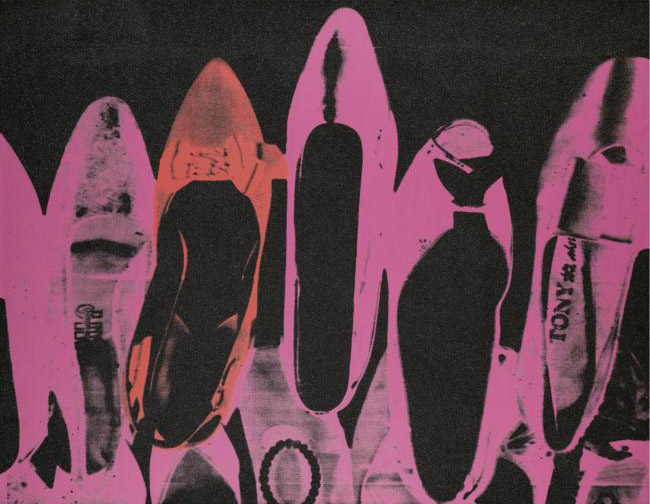In 1912, a young journalist for the New York Evening Sun named Don Marquis began writing his own daily column, “The Sun Dial”. Producing a daily column is arduous work that requires patience and discipline. Though he was a creative and prolific individual, Marquis was neither patient nor disciplined, and, as a result often found himself pressed for material.{{1}} In 1916, he hit upon a brilliant solution: get an insect to do it. Or (more abject still) a poet insect.
Marquis comes into his office early one morning only to find, to his considerable surprise, “a giant cockroach jumping about on the keys”:
He did not see us, and we watched him. He would climb painfully upon the framework of the machine and cast himself with all his force upon a key, head downward, and his weight and the impact of the blow were just sufficient to operate the machine, one slow letter after another. He could not work the capital letters, and he had a great deal of difficulty operating the mechanism that shifts the paper so that a fresh line may be started. We never saw a cockroach work so hard or perspire so freely in all our lives before. After about an hour of this frightfully difficult literary labor he fell to the floor exhausted, and we saw him creep feebly into a nest of the poems which are always there in profusion.{{2}}
This is Archy, or archy, depending on which side of the fierce debate over the orthography of his name you occupy. As it requires the force of his entire body simply to make an impression on the key and, due to his diminutive size, it is impossible for Archy to work the shift key, he is usually unable to type any of the keys that require a shift, including upper-case letters. Thus, he signs his own name “archy.” As E. B. White observes in his introduction to a major Marquis collection, “Archy … was no e. e. cummings”, which connotes not only the inferior quality of his verse, but that Archy typed his name the way he did out of necessity rather than affectation. White adds that Marquis himself was in the habit of capitalizing Archy’s name when referring to him.{{3}} In one famous piece, “archy protests”, the cockroach implies that his all-lowercase is a signifier of his implicit protest against his appalling working conditions and the philistinism of critics who fail to note those conditions:
say comma boss comma capital
i apostrophe m getting tired of
being joshed about my
punctuation period capital t followed by
he idea seems to be
that capital i apostrophe m
ignorant where punctuation
is concerned period capital n followed by
o such thing semi
colon the fact is that
the mechanical exigencies of
the case prevent my use of
all the characters on the
typewriter keyboard period
capital i apostrophe m
doing the best capital
i can under difficulties semi colon
and capital i apostrophe m
grieved at the unkindness
of the criticism period please
consider that my name
is signed in small
caps period
archy period {{4}}
Archy normally does without punctuation entirely, but his decision here to spell out the punctuation is ingenious. Not only does it give him access to the characters he cannot normally employ, but he can also emphasize the arduousness of the act of typewriting itself.
In any event, Archy is a “vers libre bard” (yet another typing poet) who “died and my soul went into the body of a cockroach”.{{5}} As if the struggle of typing poetry itself were not enough, a struggle that Archy repeats night after night “for you / on your typewriter”, a rat named Freddy (another reincarnated poet) habitually first scorns Archy’s poetry, then eats it, erasing an entire night’s work.{{6}}
Archy is, of course, a thinly veiled analogy for the people that White refers to as the “thousands of poets and creators and newspaper slaves”{{7}} that fill all of the column inches of the daily papers of the modern world with typewriting, especially Marquis himself. In his descriptions of Archy at work, White writes, “Marquis was writing his own obituary notice”.{{8}} “{{Marquis}} was never a robust man”, observes White, adding that he “usually had a puffy, overweight look and a gray complexion”.{{9}} Marquis’ writing career and home life were anything but smooth. After nearly burning himself out on his column, he switched to playwriting, and, after making a small fortune on a play based on another of his characters, The Old Soak, lost it all on his next play, about the Crucifixion (unlike Mel Gibson, Marquis was a skeptic). A dalliance with writing for Hollywood left him bitter and vituperative. Most difficult of all, Marquis lost two children and two wives in less than fifteen years, and died penniless, sick and blind after a series of strokes in 1937.{{10}}
Archy was, as White observes, “the child of compulsion, the stern compulsion of journalism”{{11}}, meaning that not only did his cockroach typewriting reflect the material quality of Marquis’ writing life, he also solved a number of problems for Marquis on a technical level. Because Archy wrote in free verse, Marquis suddenly had license to write very short lines, lines which did not have to fill the whole width of his oppressively wide column. Runover lines were no longer an issue, because every line was broken. Without uppercase or punctuation to worry about, there was less to copy edit. In addition, Marquis could rely on the logic of rhyme and other paratactic structures to power his writing forward when normative syntax failed him; doggerel is always easier to produce than incisive journalistic analysis. “Thanks to Archy,” White writes, “Marquis was able to write rapidly and almost (but not quite) carelessly”.{{12}}
That relative freedom allowed Marquis to produce, via Archy and his friend Mehitabel the cat (a reincarnation of Cleopatra), an enduring body of literature. Since its first appearance in 1927, Archy and Mehitabel has been in print continuously, perhaps because it delineates the agonism of typewriting in a fashion that is lighthearted and poignant by turns. Archy does have his small moments of triumph:
I THOUGHT THAT SOME HISTORIC DAY
SHIFT KEYS WOULD LOCK IN SUCH A WAY
THAT MY POETIC FEET WOULD FALL
UPON EACH CLICKING CAPITAL
AND NOW FROM KEY TO KEY I CLIMB
TO WRITE MY GRATITUDE IN RHYME {{13}}
… but even on this singular occasion, which Archy marks by putting in the extra effort to rhyme his composition, a sudden capricious attack by Mehitabel unlocks the shift and knocks archy “right / out of parnassus back into / the vers libre slums i lay / in behind the wires for an hour after”.{{14}} Mostly, Archy’s lower-case world is a kind of prison, and even his dreams of machine aided-transcendence take the form of a plea:
[…] say boss please lock the shift
key tight some night
I would like to tell the story of
my life in all capital
letters
archy {{15}}
It never happens again.
Originally published as “Alienated 1: under difficulties semi colon.” Matrix 71 (summer 2005): 6-7.
[[1]]White, E. B. “Introduction.” In Marquis, Don. The Lives and Times of Archy & Mehitabel. Illus. George Herriman. New York: Doubleday & Company, 1950. xvii-xxiv. xviii.[[1]]
[[2]]Ibid, 20.[[2]]
[[3]]White, E. B. “Introduction.” xviii.[[3]]
[[4]]Marquis, Don. “archy protests.” The Lives and Times of Archy & Mehitabel. 202-03.[[4]]
[[5]]Ibid.[[5]]
[[6]]Marquis, Don. The Lives and Times of Archy & Mehitabel. 21.[[6]]
[[7]]White, E. B. “Introduction.” xix.[[7]]
[[8]]Ibid, xvii.[[8]]
[[9]]Ibid, xxiii.[[9]]
[[10]]www.donmarquis.com/don/index.html[[10]]
[[11]]White, E. B. “Introduction.” xx.[[11]]
[[12]]Ibid, xxi.[[12]]
[[13]]Marquis, Don. The Lives and Times of Archy & Mehitabel. 203.[[13]]
[[14]]Ibid, 204.[[14]]
[[15]]Ibid.[[15]]



